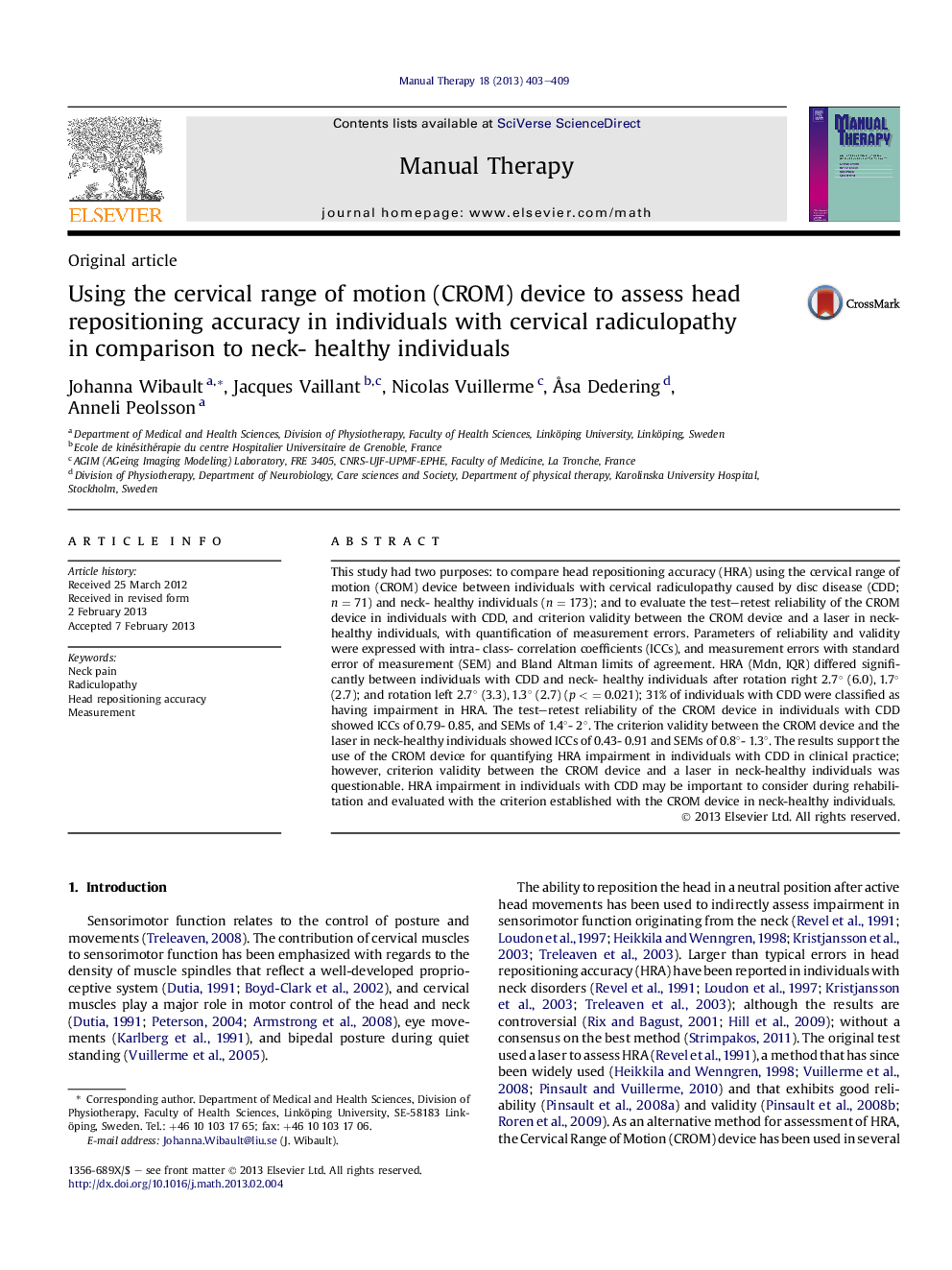| Article ID | Journal | Published Year | Pages | File Type |
|---|---|---|---|---|
| 2625048 | Manual Therapy | 2013 | 7 Pages |
This study had two purposes: to compare head repositioning accuracy (HRA) using the cervical range of motion (CROM) device between individuals with cervical radiculopathy caused by disc disease (CDD; n = 71) and neck- healthy individuals (n = 173); and to evaluate the test–retest reliability of the CROM device in individuals with CDD, and criterion validity between the CROM device and a laser in neck-healthy individuals, with quantification of measurement errors. Parameters of reliability and validity were expressed with intra- class- correlation coefficients (ICCs), and measurement errors with standard error of measurement (SEM) and Bland Altman limits of agreement. HRA (Mdn, IQR) differed significantly between individuals with CDD and neck- healthy individuals after rotation right 2.7° (6.0), 1.7° (2.7); and rotation left 2.7° (3.3), 1.3° (2.7) (p < = 0.021); 31% of individuals with CDD were classified as having impairment in HRA. The test–retest reliability of the CROM device in individuals with CDD showed ICCs of 0.79- 0.85, and SEMs of 1.4°- 2°. The criterion validity between the CROM device and the laser in neck-healthy individuals showed ICCs of 0.43- 0.91 and SEMs of 0.8°- 1.3°. The results support the use of the CROM device for quantifying HRA impairment in individuals with CDD in clinical practice; however, criterion validity between the CROM device and a laser in neck-healthy individuals was questionable. HRA impairment in individuals with CDD may be important to consider during rehabilitation and evaluated with the criterion established with the CROM device in neck-healthy individuals.
